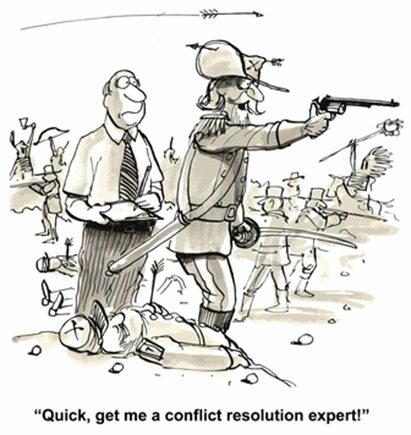Safety Doesn’t Need Military Language
 One of my favourite books on learning is by Donald N. Michael ‘Learning to Plan and Planning to Learn’. Michaels is one of the great education philosophers up there with the likes of Parker J. Palmer, Buber, Ellul, Claxton, Robinson, Maclaren, Illich and Friere. Michaels is the best in articulating how boundaries are critical for learning, he states:
One of my favourite books on learning is by Donald N. Michael ‘Learning to Plan and Planning to Learn’. Michaels is one of the great education philosophers up there with the likes of Parker J. Palmer, Buber, Ellul, Claxton, Robinson, Maclaren, Illich and Friere. Michaels is the best in articulating how boundaries are critical for learning, he states:
‘In the Western construction of reality war-time language provides pervasive metaphors for describing peace-time activities and goals: ‘target’ audience, ‘victorious’ political ‘allies’. ‘defeat’ or ‘shoot down’ the opponent’s proposal. ‘Attack’ and ‘destroy’ the causes of the problem, ‘capture’ a share of the market. (Note that sport, the other popular source of metaphors for describing civil society, also uses many war metaphors.) These metaphors explicitly and (and perhaps more importantly) tacitly emphasize we/they, before/after, winner/loser, beginning/ending – fixed boundaries in time space and relationship. Such metaphors, used deliberately or thoughtlessly, reinforce the persistence of inappropriately discriminated boundaries that are maintained by feedback norms hopelessly inadequate for a world of learning and planning. Learning requires metaphors that are compatible with its purposes and experiences in a fluid, amorphous world’.
As we approach ANZAC Day let’s not fall into the trap of thinking that military language is helpful (or attractive) for learning in the safety community. Discovering which metaphors serve learning is itself a learning task for the safety community as it continually gets caught up in the logic of binary opposition.
Metaphors and semiotics (symbols and text) are boundary discriminators. They are a technique to designate boundaries and help learning to flow across them. The more we limit boundaries, the greater we limit learning. Restricted boundaries create deep social psychological resistances to learning as we can only learn within social boundaries. For example, where do the notions of vulnerability, listening, conversation, understanding, empathy, helping, collaboration and trust fit in a military bounded context? Surely military metaphors set boundaries that constrain these humanizing values.
Weick (The Social Psychology of Organizing, 1979, p. 50) states: states: ‘Whatever its origin, the military metaphor is a bad choice when used alone because it forces people to entertain a very limited set of solutions to solve any problem and a very limited set of ways to organize themselves’. Further: ‘They solve problems by discharging people (honourably or otherwise), tightening controls, introducing discipline, sending for reinforcements, or clarifying responsibilities’. Weick, like Michaels, knows that when we set limiting boundaries in worldview that we close the imagination and learning.
We learnt recently that drug activity is rampant in the Navy: (http://www.abc.net.au/7.30/content/2015/s4212928.htm),
that suicide rates are high:
(http://www.abc.net.au/7.30/content/2015/s4212153.htm.
We know of the military sex scandals:
(http://www.abc.net.au/7.30/content/2015/s4212153.htm;
https://au.news.yahoo.com/a/26667136/exclusive-skynet-sex-scandal-at-adfa/)
and and problems with post service suicide:
and poverty/homelssnes of diggers on the streets:
(http://www.heraldsun.com.au/news/victoria/help-our-homeless-diggers-the-disgrace-of-our-military-veterans-dying-on-our-streets/story-fni0fit3-1227175362714).
So, let’s not hold up the military as some bastion of ethical purity or it’s models as effective leadership. When you can’t look after your own even with extensive funding then it tells you that something isn’t working.
This blog is not intended to ‘belt’ the military that serve a necessary service for our country. Australians don’t chose war, we are not war mongers but rather are compelled to defense by threats against our country/allies. However, to be attracted to the military model of thinking in safety seems odd when safety is about saving lives not taking them. It seems strange to be attracted to metaphors of harm in a quest to eliminate harm? The idea of ‘defense’ and ‘attack’ simply doesn’t make sense for safety thinking, nor does is idea that military semiotics is helpful for learning in safety.
Take this example: Warriors 4 Safety? If we need military metaphors in safety then who is safety at war with? People who don’t comply? Wrongdoers? People who ‘chose’ not to be safe? This blog is not an ‘attack’ on anyone’s person service record but a questioning of why safety needs military metaphors to think about ‘saving’ people? We don’t need safety to be a ‘Lean, Green Safety Machine’ (http://www.safetydifferently.com/lean-green-safety-machine-part-3/) nor should we talk in safety about ‘soft’ and ‘hard’ skills again, such language is unhelpful. People skills are not ‘soft’ skills but ‘human’ skills and it looks at present by news reports that the military could do with more of these skills.



Manjit Handa says
Your article is very simplistic and lacks a historical perspective.
The military developed into one of the biggest organisations since Europeon kings started fighting one another. Even now, the US Military budget dwarfs all other departments. The developing years of NASA were all crewed by astronauts drawn from the US Military. Same goes for the Soviet cosmonauts. Software giants have started occupying more space in recent times but you have to wait before they start to introduce more of non-military terminology into popular culture.
What is the origin of the electrical terms “male plug” and “female socket”? Military or sexist? What about a “grease nipple”?
The military was the first to develop check-lists which are now used by all organisations that aim to improve efficiency and prevent errors and omissions. If workers would only follow checlists diligently, we would have much fewer accidents and near-misses.
Rob Long says
Manjit, and the purpose of military is? and the language of militarism is? Read the article, its about the linguistics, semiotics and discourse of military language. Read the blog. How does military language help Safety? What place do the metaphors of war, violence and fighting have in thesafety industry. I would suggest none.